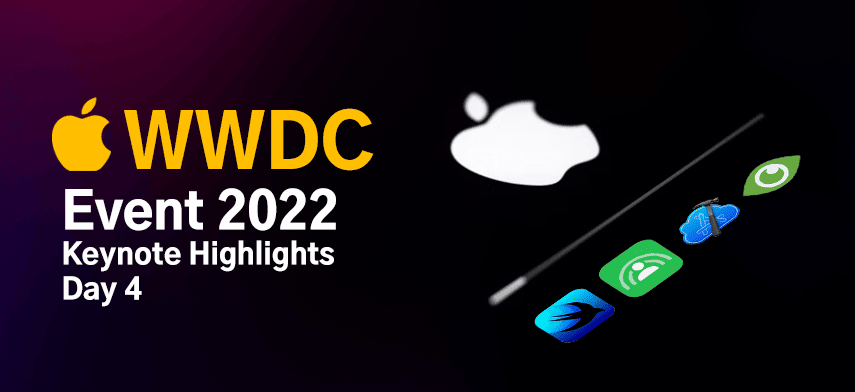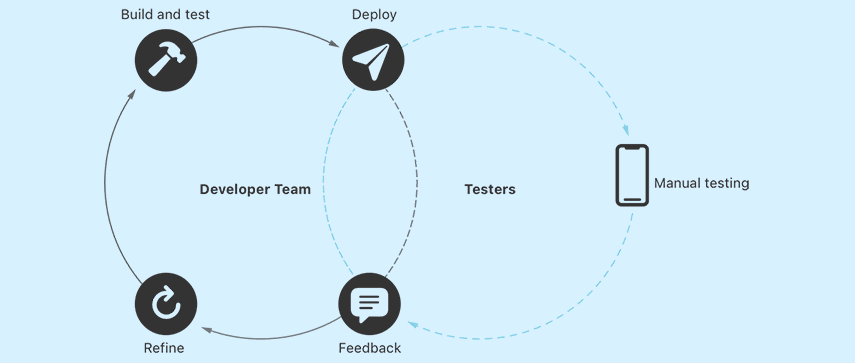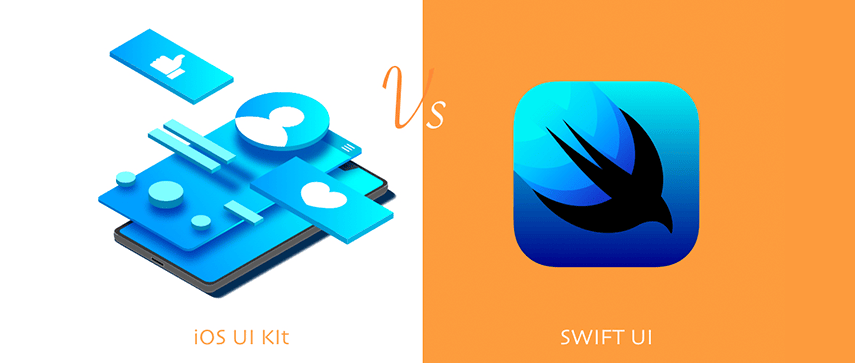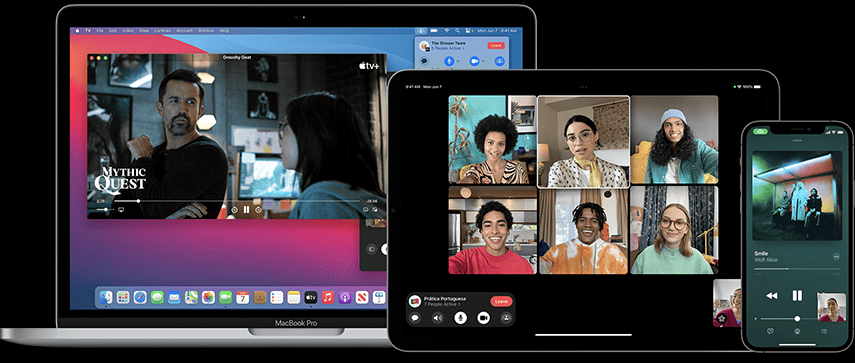Day 4 of the Apple WWDC Event 22 began on a fresh note with various sessions, lounges, labs, and other activities. With the focus on integrating design experiences and creating seamless applications, Day 3 provided developers with newer ways to build their applications. A visually stunning display with an array of dispatches has been announced for day 4!

Here’s a brief synopsis of what has been announced on day 4.
Apple WWDC Event 2022 Day 4 Summary
The announcements for Apple developer conference day 4 are all about creating an experience through app and camera extensions, Xcode cloud for teams, and designing interfaces across various applications. This developer conference has been informative, insightful, and full of surprises that will keep improving the application development process.
Let’s dive into the sessions from day 4 of the Apple WWDC Event 22.
Constant Integration with Xcode Cloud for Teams

Xcode is well known for its consistency in offering a suite of tools developers can utilize to test, build, and release applications and frameworks on Apple platforms. When there is an addition of support and features for devices and platforms, the app or its framework will use the codebase to grow in its complexity. This can create an issue with the quality of the product.
With the integration of Xcode Cloud, developers and organizations can adopt a system of constant integration and delivery (CI/CD). This CI/CD is a basic practice for monitoring, improving, and ensuring the quality of apps and frameworks. The Xcode Cloud being a CI/CD system, uses Git as source control and provides developers with an integrated system. This helps to ensure the quality and stability of the codebase. Having Xcode Cloud can assist in efficiently publishing an application. Apple’s cloud infrastructure combined with Xcode can help app developers to build and test codes with TestFlight and App Store Connect.
Xcode Cloud simplifies:
- The process of building and testing code automatically.
- Automation of testing applications on Apple devices in the Simulator frequently.
- Receiving notifications from the Xcode Cloud system to identify any errors before it creates a concerning issue.
- Distribution of new application versions to the testers and team members with the Apple TestFlight Xcode Cloud feature.
- The making of new versions for apps available for review before the app is published on the App store.
- The development of software by collaborating with Apple’s cloud infrastructure and Xcode.
Power of SwiftUI for UIKit App

The SwiftUI infrastructure has proven to be impactful in the developer community. Developers have invested in creating apps by using UIKit. The benefits of SwiftUI are enormous. By integrating SwiftUI with an existing application is possible by using the UIHosting controllers. This can assist in adding SwiftUI views and layouts on UIKit, AppKit, or WatchKit.
The hosting controller offers a set of SwiftUI views in a format that can be added to storyboard-based applications. By using a HostingViewController, the SwiftUI view can be treated as an entire scene or as a singular component within the existing UIKit. Previously, the view controller was used to move the data collected between the user interface and the model. But SwiftUI in UIKit can offer maximum synchronization for applications by making the data model classes observable objects, publishing their properties, and declaring special attributes. For ensuring data-driven attributes, user-driven data transforms the flow back into the model and binds the user interface control with the properties of the model. This helps to keep a single source of data.
- Managing Interface with SwiftUI: The use of table displays has various values added to the collection of elements in SwiftUI. When creating a table, developers can provide a collection of elements and then tell these tables about how to find the required value for each column. There is another addition to the Swift on iPadOS called the NavigationSplitView, which presents a view in two or three columns. This is where the selections in leading columns assist in controlling the presentations in the subsequent columns. It supports iOS, iPadOS, and macOS with swift navigation. The three-column split-view consists of the Sidebar, Content, and Details columns.
- List separators in SwiftUI: The ListRowSeparators in SwiftUI set the display mode with a specific row. Separators are represented below or above a row and developers can specify which preference should be applied. Modifiers in SwiftUI express the presence of the List. The final arbiter in the separator visibility is the list style.
- List swipe action in SwiftUI: Swipe actions add customized swipe actions to the row of existing lists. This method adds the swipe actions to a specific view indicating the HorizontalEdge, where the action originates. Furthermore, it defines the individual actions with the Button instances.
SharePlay Experience

SharePlay is known for bringing people together by integrating new ways into applications like FaceTime and the Group Activities APIs. SharePlay allows people to share their experiences with others via FaceTime and Messages. For iPadOS and iOS, apps supporting the SharePlay feature will appear on the controls of the apps. Hence, simplifying the process of discovering shared experiences offered by the specific application. SharePlay also encourages:
- To turn applications into shared experiences: With SharePlay and Group Activities API, this allows people to share their experiences via FaceTime. Now it is easier to bring movies, music, and tv from a user’s app into a space where people are already connecting.
- Making quality connection easy: The Group Activities and AVFoundation APIs are deeply integrated with the Core Media Stack on a device. Users playing for any media will automatically have a playback for the entire group at the same time. It provides an immersive feature making people feel that they’re in the same atmosphere.
- Helps to reach new users: SharePlay is now a powerful route to reach new people organically, as it introduces the app to friends, relatives, and acquaintances. The Group Activity API offers opportunities to bring the onboarding to new users by offering special trials designed specifically for users of SharePlay.
Interface Writing for an Inclusive Application

An inclusive application that prioritizes communication and puts people first by presenting proper content, functionalities, and more that can be understood clearly by everyone. Before designing an inclusive app, a few goals require to be reviewed before the images and content is used. This goal provides insight into the experience apps provide to users. It is important to understand the emotions of people across a multitude of situations and how an app on the device can help in communicating by the knowledge it has gathered. Every person has unique qualities that are distinctive and dynamic. To include human interface guidelines, a few things have to be kept in mind; age, gender, gender identity, race, ethnicity, sexuality, physical and cognitive attributes, permanent, situational, and temporary disabilities, religion, language, culture, opinions, and education.
Using inclusive and simple language makes users feel welcome and warm, and it helps them to understand the application better. It is necessary to implement writing in applications by carefully reviewing it to make sure that the tone and voice don’t make people feel excluded. The style of writing communicates as much as spoken words do, with the right tone and voice. When developing an application on Apple devices, address the communication with UX writers or content designers so that people feel inclusivity when using the app. Clear, minimal, and direct communication can help create the right alerts and notifications without seeming too invasive. Create an application that is accessible to everyone regardless of background with VoiceOver features, Speak Screens, Display Accommodations, and more.
Camera Extension with Core Media I/O

The camera extension is the fresh and new extension available on the macOS 12.3 and future versions. Camera extensions provide a simple and secure model for developers to build high-performing camera drivers for macOS. There are three primary components in the camera extension:
- CMIO ExtensionProvider: This represents the primary interface of the extension. The providers and the source can manage the device extensions and connections with the client. Additionally, they can also define the properties that are common to the extension.
- CMIO Extension Device: This represents the software and the hardware of a device where the extension publishes the selectable camera on the apps. Devices and their configuration sources support the resources with buffer pools that are used when streaming data.
- CMIO ExtensionStream: This represents the streaming of data for sending to the clients. The source of a stream specifies the format, the maximum and the minimum frame rates, and the direction of the stream. The source object of streams is responsible for starting and stopping the flow of data.
Developers can simplify the process of creating individual extensions with Xcode as it provides a template for camera extensions. It is a fully functional extension integration creating a virtual camera device that renders into a horizontal white strip of the line moving up and down the display.
Vision

Vision can be applied to computer algorithms for performing various tasks on images and video inputs. The framework of Apple Vision determines the performance of face and face landmark detections, barcode recognition, text detections, general feature tracking, and image registration. Vision allows developers to use the custom Core ML features for classification and detection tasks. The latest update on the Vision APIs helps the apps to detect faces, recognize texts, and implement an optical flow for the applications. It provides various capabilities for video-based applications and shows the way to update the apps with revisions for the machine learning models driving the APIs.
Collaborations with Messages

The collaboration of apps and Messages has a stronger connection for efficiently streamlining the workflows. The starting of a collaboration can simply use the share button and the system share popover to create an immersive experience with collaborations. People can easily share invitations in already existing conversations on the Message app or start a call on FaceTIme. Editing notifications from collaborative applications keeps people up-to-date with the changes in the features and updates required of an application.
Final thoughts,
Moving forward in the Apple WWDC event, we have all witnessed the way Apple is improving its operating systems to better cater to developers. The developers’ community is already looking into the benefits of these integrations to provide better in-app experiences to the end-users.
Follow the announcements associated with Apple’s new releases here:
Apple WWDC Event 2022 Keynote Highlights Day 1
Apple WWDC Event 2022 Keynote Highlights Day 2
Apple WWDC Event 2022 Keynote Highlights Day 3

Author's Bio:

Pritam Barhate, with an experience of 14+ years in technology, heads Technology Innovation at Mobisoft Infotech. He has a rich experience in design and development. He has been a consultant for a variety of industries and startups. At Mobisoft Infotech, he primarily focuses on technology resources and develops the most advanced solutions.


